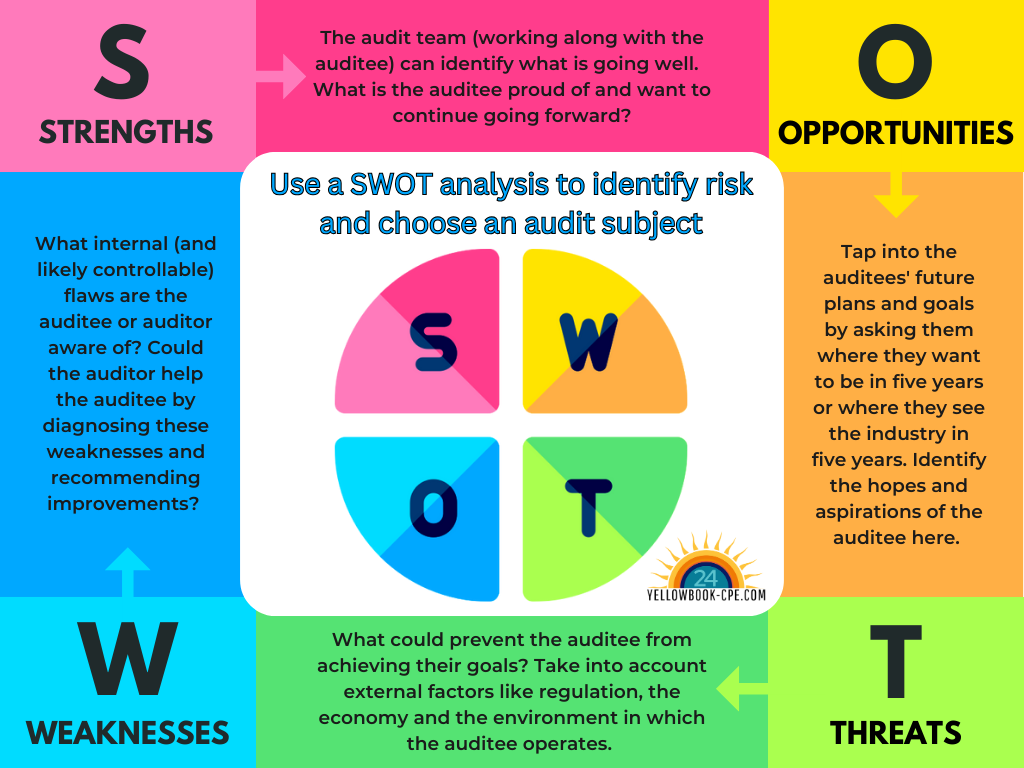Using SWOT analysis
Using SWOT analysis is an incredibly useful tool to identify risk and choose an audit subject. It’s especially helpful when an auditee tends to plan only one year at a time. When using the SWOT process seen here, it could shape their goals five years or more into the future while reducing risk.
Sure, not everything works out 100% of the time, especially in the world of government bureaucracy. But that’s when you pull out this handy dandy SWOT Analysis tool (PDF) to keep you and your auditee on track.
The SWOT break-down
Working with the auditee, ask these questions to determine goals while mitigating any associated risks:
- Strengths: What does the auditee do really well and want to continue working on?
- Opportunities: Where does the auditee want to be in five years? 10 years? Maybe longer?
- Threats: What could prevent these opportunities from taking place? Definitely keep regulation, the economy and the auditee’s environment in mind.
- Weaknesses: What has the auditee and auditor identified as improvement areas?
Strengths and opportunities are leveraged to minimize the impact of potential risks, while weaknesses and threats are addressed to reduce the likelihood of those risks occurring.
Want to learn more?
As an auditor, you need to know how to assess risk and choose relevant evidence. I recommend the self-study course, The Audit Risk Formula, which is 3.5 hours Yellow Book qualifying CPE credit.
Need even more info? I invite you to join me for the live webinar Leading an Audit Project scheduled January 16-19, 2024. The live portion of this course is 18 hours CPE credit, but you also receive 4.5 bonus self-study hours for a total of 22.5 hours of CPE. Hope to see you there!


 Yellowbook-CPE.com is registered with the National Association of State Boards of Accountancy (NASBA) as a sponsor of continuing professional education on the National Registry of CPE Sponsors. State boards of accountancy have final authority on the acceptance of individual courses for CPE credit. Complaints regarding registered sponsors may be submitted to the National Registry of CPE Sponsors through its website:
Yellowbook-CPE.com is registered with the National Association of State Boards of Accountancy (NASBA) as a sponsor of continuing professional education on the National Registry of CPE Sponsors. State boards of accountancy have final authority on the acceptance of individual courses for CPE credit. Complaints regarding registered sponsors may be submitted to the National Registry of CPE Sponsors through its website: